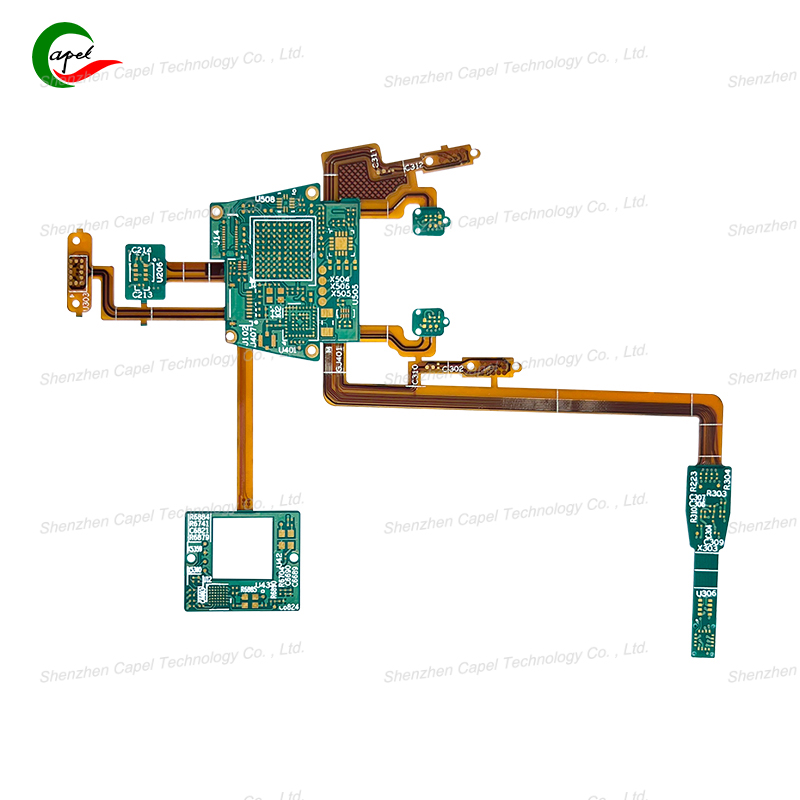Date: 2025-10-10
If you've ever designed electronics for products that get knocked around - from power tools to automotive sensors - you've probably wondered about rigid-flex PCB durability. Having tested these boards in everything from construction equipment to consumer wearables, I can share some practical insights about how they handle real-world impacts.
Why Rigid-Flex Construction Handles Shock Better
The combination of rigid and flexible sections creates a natural advantage when dealing with mechanical stress:
Flexible Sections Act as Shock Absorbers
The polyimide flexible portions work like miniature suspension systems. During impact, they can flex and distribute forces instead of concentrating stress at specific points. I've seen boards survive 6-foot drops onto concrete because the flexible sections dissipated energy that would have shattered a rigid board.
In automotive applications, this is particularly valuable. I recently tested door module PCBs where the flexible sections could bend up to 15 degrees during door slam events - something that would fracture solder joints on traditional rigid boards.
Rigid Sections Provide Stable Mounting
Heavy components need a solid foundation, and that's where rigid sections excel. The FR-4 material provides enough structural integrity to keep larger components like processors and power management ICs securely anchored during vibration.
I worked on an industrial robot project where the rigid sections maintained component positioning through 5G vibrations that would have dislodged chips from pure flexible boards.
Eliminating Connection Failure Points
The integrated nature of rigid-flex boards removes one of the most common failure points in electronics: board-to-board connectors and wiring harnesses. In drop testing, I've consistently found that integrated rigid-flex designs outperform connected assemblies by 40-60% in shock survival rates.
Real-World Performance Comparisons
From my testing experience:
In automotive environments, rigid-flex boards typically survive 15G mechanical shock tests that would crack rigid boards around mounting points. The flexible sections allow just enough movement to prevent stress fractures.
For industrial applications, the vibration resistance is even more impressive. I've monitored rigid-flex boards in factory equipment running 24/7 that showed no degradation after 10,000 hours, while rigid boards developed solder joint cracks and flexible boards showed trace fatigue.
Where Rigid-Flex Really Shines
Automotive Applications
Modern vehicles represent a perfect use case. Engine control modules using rigid-flex construction can handle both the constant vibration (200-500Hz) and occasional high-G impacts from potholes or minor collisions.
Portable and Wearable Devices
The consumer electronics space provides great examples. Action cameras and fitness trackers benefit tremendously from rigid-flex construction. I've tested devices that survived repeated 3-meter drops specifically because their rigid-flex boards could handle the impact better than alternative approaches.
Industrial Equipment
In manufacturing environments, where equipment takes constant abuse, rigid-flex boards deliver reliability that pure rigid or flexible boards can't match. The combination of vibration resistance and mechanical durability makes them ideal for these challenging applications.
Enhancing Shock Resistance
While rigid-flex boards perform well inherently, there are ways to improve their shock resistance:
Strategic Reinforcement
Adding localized stiffeners in high-stress areas can dramatically improve performance. I often specify polyimide stiffeners in transition areas between rigid and flexible sections - this reduces stress concentration without significantly impacting flexibility.
Advanced Mounting Techniques
For particularly heavy components, using flexible adhesives instead of rigid epoxy can provide better impact performance. The slight give in the adhesive helps absorb shock that would otherwise transfer directly to the board.
Environmental Protection
Pairing rigid-flex boards with properly designed enclosures creates a system-level solution. I've seen simple silicone mounting grommets improve drop test performance by 30% in consumer devices.
Understanding the Limits
It's important to recognize that rigid-flex boards aren't indestructible. In extreme scenarios - like direct impacts with sharp objects or sustained resonance at natural frequencies - they can still fail. However, for most real-world applications, they provide significantly better mechanical reliability than other PCB technologies.
The key advantage I've observed across hundreds of designs is that rigid-flex boards fail gracefully. Instead of complete fracture (like rigid boards) or trace separation (like flexible boards), they typically show measurable degradation that allows for detection before complete failure.
Practical Implementation Advice
Based on my experience, the most reliable rigid-flex designs share common characteristics:
Gradual transitions between rigid and flexible areas
Proper strain relief in bending areas
Careful component placement relative to board stresses
Appropriate material selection for the specific mechanical environment
For most applications facing mechanical stress, rigid-flex technology provides the best balance of reliability, performance, and cost. The improved shock resistance isn't just theoretical - it translates directly to fewer field failures and longer product lifespan.
related link:
Capel manufacturing PCBs since 2009. Professional technology and high-precision Printed Circuit Boards involved in Medical, IOT, UAV, Aviation, Automotive, Aerospace, Industrial Control, Artificial Intelligence, Consumer Electronics etc..